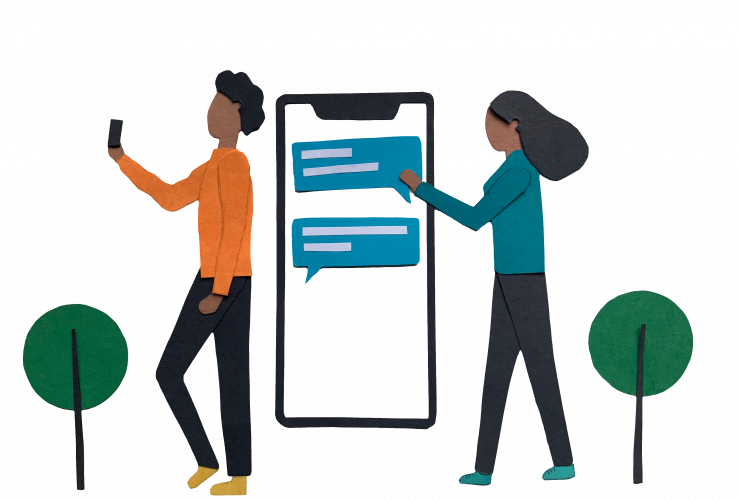How (and Why) to Choose a Hashtag for Your Brand
As you may already know, hashtags are conversation starters. You can use them on Twitter, Instagram and Pinterest (less so on Facebook) to connect with your target audience around topics of relevance to your brand.
You can also create brand-specific hashtags for various purposes. For example, as Becca Edwards notes in this post, Rita’s Italian Ice offers free Italian ice on the first day of spring and uses the hashtag #ritasfirstdayofspring to promote the offer.
In that post, you learned all about how to be a hashtag expert, and you’ll want to read that post first before reading mine. Today, I’ll share with you some specifics on creating a hashtag just for your brand.
When to create a brand-specific hashtag? Wait until you’ve used other hashtags to connect with members of your target audience. That way, you’ll have a following that’ll connect with the brand-specific hashtag and it won’t drift off into the great online abyss, never to be seen again.
Brand-specific hashtags work well when you want to promote a specific offer, event or trending topic. Now for some basics on creating one.
Keep It Short, Unique and Memorable
Although there are always exceptions, shorter hashtags are easier to remember and retype. It can be a single word or a phrase, just as long as it isn’t currently in use.
That is, always conduct a search to see that any hashtag you wish to use isn’t already in circulation with a different meaning. Not only would that make it not unique, but it also could spell disaster if you take the current hashtag out of context and try to apply it to your brand. (We discussed this matter in How to Be a Hashtag Expert; see the DiGiorno Pizza #WhyIStayed section as an example.)
Having a memorable hashtag helps keep the conversation about you and your brand. That way, as people use the hashtag, all roads will lead back to you, and you’ll leave people with a positive impression of your brand.
Tug at Their Heart Strings
When Make a Wish Foundation used the hashtag #SFBatKid, they were promoting a documentary about a boy whose wish was to dress up as Batman and save the day. The hashtag was well-received, with even President Obama getting in on the trend. His message to #SFBatKid via Vine? “Way to go, Miles. Way to save Gotham!”
https://twitter.com/416webs/status/813421908934922240
Look for Those Double Meanings
When you jam a bunch of words together, you have to be sure the words don’t also spell something else. One misused capital letter, and your hashtag could become a different animal altogether.
Consider the trending hashtag of a few years ago #NowThatchersDead in response to Margaret Thatcher’s passing. Guess what it turned into? #NowThatChersDead, followed quickly by a hailstorm of rumors that the singer had died when, in fact, she was very much alive.
Proofread, and proofread some more. Look for any possible misspellings that could ensue. And change the hashtag if there’s even a remote possibility of it getting morphed into something different and unintended.
4 more days… I don't wanna see #nowthatchersdead pic.twitter.com/HjQGyK70Xy
— Iskaljena Zver (@ToMegaTherion11) December 27, 2016
Stay Brand-Consistent
Hashtags offer an opportunity to show your brand’s personality. Make sure your hashtags stay consistent with the kind of personality and social-media tone your brand already has.
Consider Red Bull’s #PutACanOnIt hashtag, inspired by a photo posted on Twitter in which the photographer positioned a can above a Mini Cooper in such a way that it looked like a branded Red Bull car.
People around the world began creating their own #PutACanOnIt images with Red Bull cans positioned uniquely. Moreover, the hashtag earned the company a “Best Use of A Hashtag” Shorty Award. And best of all, the hashtag aligned perfectly with Red Bull’s playful, high-energy personality on social media.
.@NancyRichmond Brands like @redbull WOW their fans by engaging them with fun. #PutACanOnIt #LeadersGetSocial pic.twitter.com/l5GkovLy8F
— Stacey Wolfe (@staceywolfe_fl) February 2, 2016
Create Hashtags for Promotions (or Let Your Audience Do It!)
Don’t forget to use branded hashtags for your events and promotions! The rules above apply of course. You can create a hashtag inviting users to tweet about their experiences, post photos and more.
One of the most successful campaigns of all time is Audi’s #WantAnR8 campaign. The tweet originated with a user who tweeted out the hashtag to express a desire to own an Audi R8. Audi then created a contest inviting users to tweet using the hashtag for a chance to win an R8 for a day:
Hey @Audi, I #WantanR8 really badly. #CAS17. pic.twitter.com/Ab08xsCP9s
— Anand (@anandthecarguy) February 21, 2017
As you can see, there are many ways to create a branded hashtag once you have a solid follower base. Your followers will become instant brand champions who not only cast your company in a good light, but also provide the social proof needed to attract new fans.
What are some other great examples of branded hashtags you’ve seen? How about the fails?
[bctt tweet=”Hashtags offer an opportunity to show your brand’s personality. #howtohashtag” username=”rallioHQ”]


